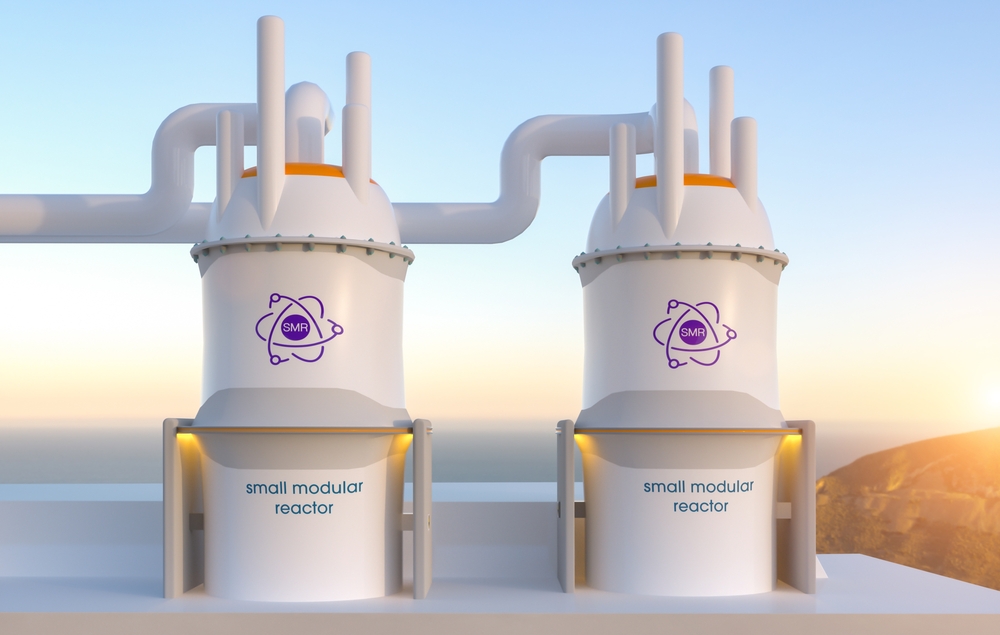The future of North Wales’ energy landscape has received a major boost as the Prime Minister confirmed the UK’s first small modular reactor (SMR) will be installed at Wylfa on Anglesey.
The announcement is a historic step for the region, with the promise of thousands of new jobs, billions of pounds of investment and a new role for North Wales in the country’s nuclear energy ambitions.
Commenting on this ground-breaking energy initiative, UK Prime Minister Keir Starmer said: “The UK was once the world leader in nuclear power, but years of neglect and inertia have left regions like Anglesey disappointed and left behind.
“Today, that has changed. We are using every tool in our arsenal – removing bureaucracy, changing planning laws and supporting growth – to deliver the country’s first SMR in North Wales.”
What is a small modular reactor?
Small modular reactors are a new generation of nuclear technology.
Unlike traditional nuclear power plants, which take more than a decade to build, SMRs are smaller, faster to build, and more scalable.
Each unit generates enough electricity to power hundreds of thousands of homes, and multiple units can power millions of homes.
The SMR has been designed for flexibility, improved safety and potential export opportunities and is a cornerstone of the UK’s strategy to achieve energy independence, support the national infrastructure and establish global competitiveness in advanced nuclear technology.
Wylfa’s Nuclear Renaissance
Wylfa has a long-standing nuclear heritage dating back to the 1960s. Now, that heritage is being revitalized with the selection of the country’s first SMR development site.
The project will be delivered by the publicly owned Great British Energy Nuclear (GBE-N), with design provided by Rolls-Royce SMR.
The SMR project is expected to support up to 3,000 local jobs across skilled trades, engineering and long-term operational roles during peak construction.
The infrastructure improvements associated with this project have the potential to inject billions of pounds into the local economy and create opportunities for a generation of young people across Anglesey and North Wales.
Welsh First Minister Erned Morgan added: “This is the moment Ynys Mon and all of Wales have been waiting for. New nuclear power is a step towards a future that guarantees stable jobs and safe energy for generations to come.”
“We have taken forward the case at every opportunity for the incredible benefits of Wylfa as a site and we wholeheartedly welcome this major decision to invest in North West Wales. Wales is once again leading the way.”
National clean energy initiative
The UK government has positioned SMR as a key element of its mission to become a ‘clean energy superpower’.
Once operational, Wylfa’s small modular nuclear reactor will be able to power around three million homes, power vital services such as the NHS and national security infrastructure, and support British innovation.
Funding for the initiative has been secured through the 2025 Spending Review, with more than £2.5 billion allocated to the country’s first SMR programme.
The wider strategy also includes the Sizewell C nuclear project, which will power 6 million homes and 10,000 jobs, and underlines the government’s commitment to modern industrial growth and energy security.
Gateway to global nuclear innovation
SMR is not just a domestic priority. The UK is actively exploring export possibilities, particularly through partnerships such as the UK-Czech Civil Nuclear Agreement.
Rolls-Royce SMR already has a partnership with Czech energy giant ČEZ, which has acquired a 20% stake in the business.
Furthermore, cooperation with the US on regulatory coordination is expected to accelerate the global deployment of advanced nuclear technology, including commercial projects such as the modular reactor planned for Hartlepool by X-Energy and Centrica.
What will happen to Wilfa in the future?
GBE-N is scheduled to begin operations at the Wilfa site in 2026. The initial phase will include the construction of three SMR units, with the site potentially accommodating up to eight units and capable of supplying power to the national grid by the mid-2030s.
In addition to Wilfa, GBE-N is also tasked with identifying additional locations for potential large-scale nuclear projects, with results expected by fall 2026.
These sites could host future projects of similar scale to Hinkley Point C and Sizewell C, each capable of powering around 6 million homes.
For Anglesey and the wider region, the SMR announcement marks a turning point. This will correct past disappointments in nuclear development, boost the local economy and position North Wales as a key player in the UK’s energy independence and clean energy ambitions.
With cutting-edge technology, international partnerships and billions of dollars of investment, Wylfa is set to become a beacon of the UK’s nuclear future.
Source link

